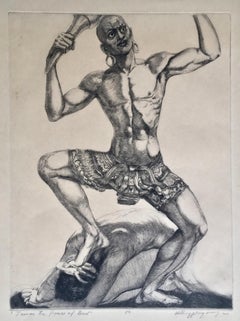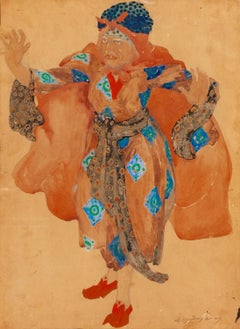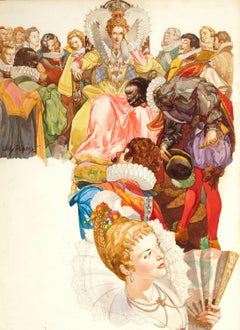Willy Pogany Art
Willy Pogany was born and educated in Hungary, before emigrating to Great Britain and then leaving again for New York after World War I. He studied at Budapest Technical University and in Munich and Paris. Pogany spent his early childhood with his brothers and sisters in a large farmhouse full of chickens, ducks, geese, dogs, pigs and horses. He became one of the nation's leading book illustrators, leaving his imprint on a wide range of books such as A Treasury of Verse for Little Children, The Rubaiyat of Omar Khayyam and The Rime of the Ancient Mariner.
1940s American Modern Willy Pogany Art
Etching
1940s Willy Pogany Art
Illustration Board, Gouache
1940s Realist Willy Pogany Art
Graphite, Watercolor, Pen, Gouache
20th Century Other Art Style Willy Pogany Art
Paper, Pencil, Watercolor
20th Century Other Art Style Willy Pogany Art
Board, Mixed Media
20th Century Other Art Style Willy Pogany Art
Watercolor, Paper
20th Century Willy Pogany Art
Mixed Media, Board
1940s Other Art Style Willy Pogany Art
Watercolor, Paper
20th Century Willy Pogany Art
Watercolor, Paper
20th Century Other Art Style Willy Pogany Art
Board, Mixed Media
1970s Realist Willy Pogany Art
Paper, Watercolor
2010s Street Art Willy Pogany Art
Concrete
21st Century and Contemporary Contemporary Willy Pogany Art
Sumi Ink, Watercolor, Mulberry Paper, Color Pencil
21st Century and Contemporary Contemporary Willy Pogany Art
Sumi Ink, Watercolor, Mulberry Paper, Color Pencil
Late 19th Century American Modern Willy Pogany Art
Etching, Aquatint
Early 20th Century American Modern Willy Pogany Art
Archival Paper, Drypoint, Etching
1980s American Modern Willy Pogany Art
Drypoint, Etching
Early 20th Century Impressionist Willy Pogany Art
Illustration Board, Gouache
Late 19th Century Impressionist Willy Pogany Art
Paper, Pencil, Watercolor
1940s American Impressionist Willy Pogany Art
Watercolor, Laid Paper
21st Century and Contemporary Contemporary Willy Pogany Art
Watercolor, Sumi Ink, Mulberry Paper, Color Pencil
21st Century and Contemporary Contemporary Willy Pogany Art
Sumi Ink, Watercolor, Mulberry Paper, Color Pencil







